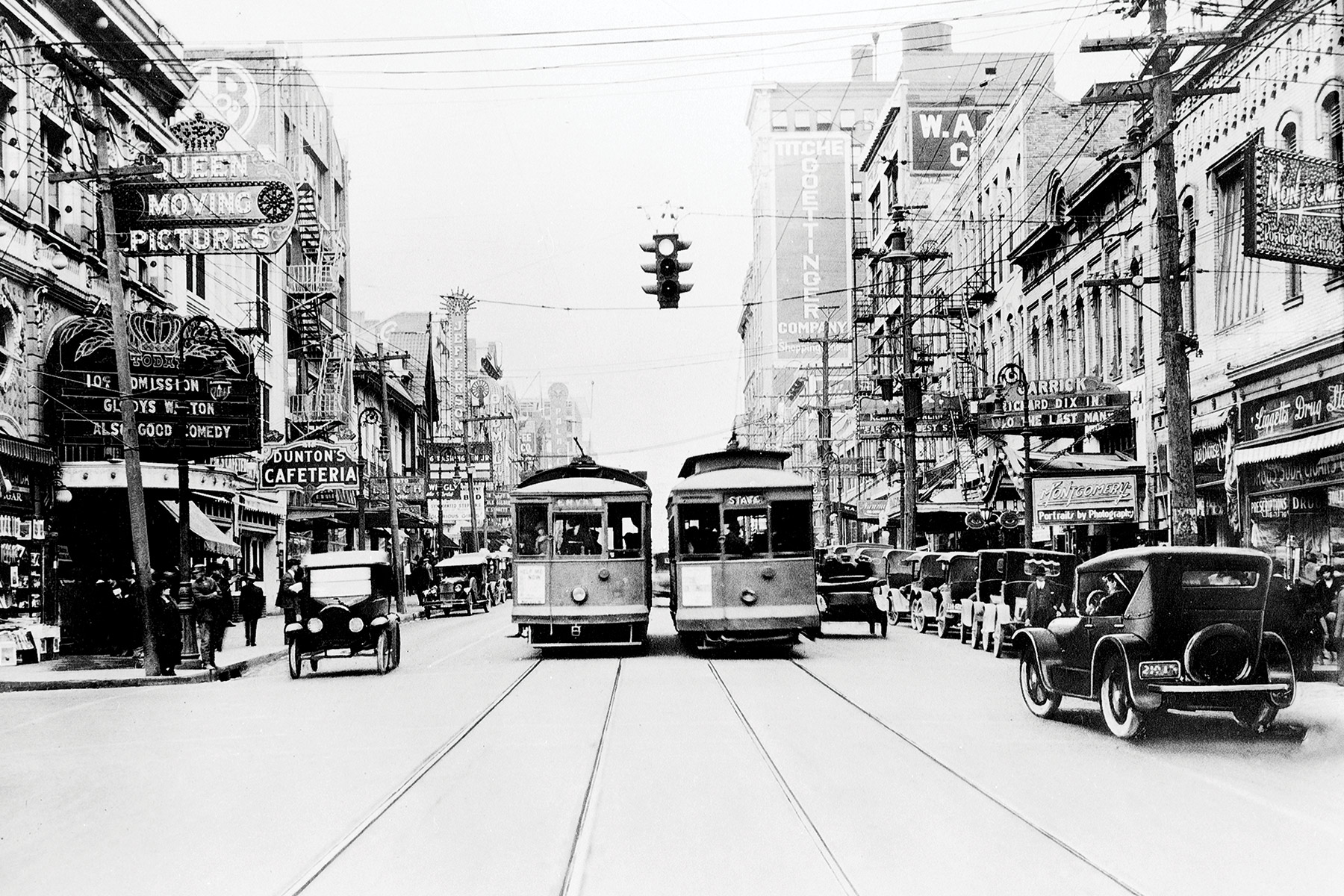There’s a shorthand for the demise of public transit in the United States: the automobile. Conventional wisdom holds that after the car was introduced in this country, there was no turning back. The automobile was more convenient than public transit. It allowed people to purchase (cheaper, larger) homes farther from city centers and still commute into work. Once people switched to cars, transit was doomed. Why would people cram into slower, more uncomfortable trains and trolleys when they could ride their motor-coaches to work everyday, and then take them to the countryside on the weekend?
But that historical view is too simplistic, argues this large, in-depth feature on CityLab, and if we don’t understand the true, underlying reasons for the demise of transit in the U.S., we won’t know how to fix it. The article begins with a simple observation that anyone who has traveled abroad knows all too well. The car was introduced everywhere. But whereas many cities in Europe, both large and small, still have intact and highly functional transit systems, U.S. cities have all but lost them. Even New York, the poster child for functional American transit, has become a recent case study in dysfunction, with ridership levels no higher than they were in the 1970s.
But then, if cars aren’t to blame for the decline in transit, what is?
In short, a combination of things, of which cars played not a small role. But the CityLab article wants to drive home a larger point. The downfall of public transit is ultimately linked to level of service, not technological obsolescence. Yes, when cars were introduced to the American public, they made travel easier and more convenient in many cases. Commutes that took an hour via transit could now be done in a matter of minutes in a car. But faced with this competition, transit services generally responded not by improving service to compete for riders, but by cutting costs to stay afloat. That created a vicious cycle of service deterioration.
What happened? Over the past hundred years the clearest cause is this: Transit providers in the U.S. have continually cut basic local service in a vain effort to improve their finances. But they only succeeded in driving riders and revenue away. When the transit service that cities provide is not attractive, the demand from passengers that might “justify” its improvement will never materialize.
The CityLab article describes a process of self-cannibalization. When service on transit declines, people are less willing to rely on it. The less people using transit justified service cuts. It’s almost as if public transit operates on an inverse of the typical supply and demand equation. Usually, the more demand there is for a product, the more producers of that product will supply it. But here, the supply of good transit—reliable and easily accessible—will drive demand.
In most cases, transit agencies didn’t react to the changing transportation landscape of the second half of the 20th century with this supply-demand relationship in mind. The highways drove demand for housing in the suburbs. Transit agencies couldn’t build competing rail lines to these new developments. But rather than focus on intra-city transit, streetcar tracks in cities like Dallas were torn up.
When attempts were made in the 1970s and 1980s to build new rail systems and light rail lines into the suburbs, they only proved effective when they connected commuters with established, dense urban cores, as in Washington D.C. or San Francisco. When they connected commuters to places like downtown Dallas, there was no reliable, accessible secondary transit system to meet them.
This didn’t happen in Europe, CityLab argues, or even in cities like Toronto. A graphic included in the article that compares levels of service of a number of U.S. cities with Toronto shows that reliable access to transit—measured here by having a bus line run every 30 minutes—translates into increased ridership. The suggestion is that people don’t avoid transit because they prefer their cars, but rather, they avoid it because most transit systems are unreliable compared with automobiles. But if the transit system becomes more reliable, riders will materialize. Or, in other words, “if you build it, they will come—but you have to build the right thing.”
In Dallas, the public transit agency hasn’t built the right thing. The bus system that blankets DART’s huge coverage system ensures that service levels will be low, and therefore, ridership will suffer. A light rail system that funnels all traffic through one corridor in downtown Dallas has created a bottleneck that ensures that the level of service on light rail cannot be improved until a second downtown line is constructed (which won’t happen until at least 2024).
But the past also holds a lesson for the future. If Dallas is going to improve access to transit—and thereby address all the ways transportation feeds into issues of growth and inequality—then it needs to focus on improving levels of service. This can start with the bus system and switching to a more grid-based service with higher volumes of buses in more concentrated parts of the city. It can expand to a gradual build out of the streetcar system so that it not only connects the Oak Cliff and McKinney lines, but also extends into East, West, and South Dallas. It can capitalize on 30 years of dropping money into a sprawling light rail system that is hardly used by connecting it into a more serviceable and reliable multi-modal transit system.
Because it is not that people don’t want to ride transit. They don’t want to ride bad transit. And for most American cities, that’s all we’ve got.





